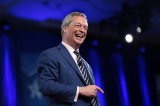
First Republic Bank has received a $30 billion lifeline from large US banks to quell concerns of a banking collapse following the collapse of two other mid-sized US lenders in the past week.
The deal, put together by US Treasury Secretary Janet Yellen, Federal Reserve Chairman Jerome Powell, and JPMorgan Chase CEO Jamie Dimon, has temporarily eased concerns about the stability of the banking sector, but investors remain cautious. Swiss bank Credit Suisse also received a $54 billion emergency loan from a central bank to strengthen its liquidity. While these rescues have prevented an imminent collapse, concerns remain about systemic risks and contagion.
First Republic Bank’s stock rose by 10% following the rescue, but fell 17% in after-market trading after the bank disclosed its cash position and the amount of emergency liquidity it needed, along with its decision to suspend its dividend. Analysts suggest that authorities appear eager to deal with systemic risks quickly, but the potential for a banking crisis is still present.
Although balance sheets are better than they were in 2008 and banks are better regulated, concerns about contagion risks are still present. The European Central Bank recently raised its interest rates by 50 basis points, emphasising that the euro zone banks are in good shape and that higher rates will strengthen their margins. Meanwhile, the focus turns to the Federal Reserve’s policy decision next week and whether it will continue with its aggressive interest rate hikes to curb inflation.
The involvement of top power brokers and the scale of the rescue packages have helped to restore some calm to global markets following a tumultuous week for banking stocks. However, the late disclosures about First Republic Bank’s cash position and the amount of emergency liquidity it needed have highlighted investor concerns about the banking sector’s stability. Although banks have sought record amounts of emergency liquidity from the Fed in recent days, the authorities have expressed confidence in the resilience of the banking system and emphasised that the current turmoil is different from the global financial crisis in 2008. Photo by Tdorante10, Wikimedia commons.








































